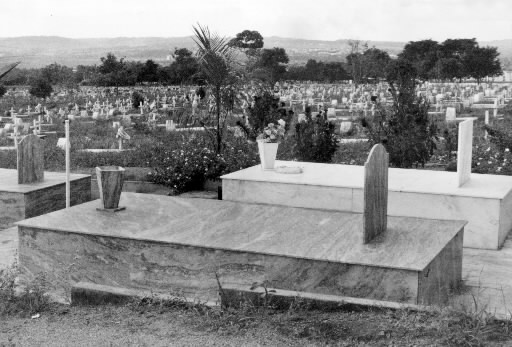3. Fear of Contamination Increases with a Vengeance
Mar. 25, 2013
Chapter 6: Brazil and Namibia
Part 1: Cesium Contamination in Goiânia
Part 1: Cesium Contamination in Goiânia
The Brazilian government and armed forces swung into action when it became clear that there was a case of cesium contamination in Goiânia, and fourteen people, including the scrap dealer, Devair Ferreira, his brother, and his niece, Leide, who had put the powder in her mouth, were flown to a hospital over five hundred miles away in Rio de Janeiro. For some of them, medical treatment arrived too late, and a month after their hospitalization, Devair's wife Maria, his assistant Israel Santos, Leide, and a young man by the name of Admilson de Souza were all dead.
The four deaths were a shock to the people of Goiânia, who vented their growing fear of exposure to radiation on the bereaved families. Leide's father, who still bears a painful scar from when he handled the cesium, gave us an account of what occurred after Leide's death.
"I was too ill to go to Leide's funeral myself, but from what I heard it was terrible. Although she was buried in a lead coffin it didn't satisfy the people living around the cemetery. They claimed the cesium contamination would spread, and some people even threw stones at the coffin during the burial." He wiped away a tear at the thought.
The graves of the four victims lie on a small hill approximately thirty minutes drive from the center of Goiania. In contrast to the other graves marked by simple crosses, their graves are monumental. Even Leide's grave, the smallest, measures six by twelve feet. Halim Girade, who was guiding us, told us that, to prevent contamination, the bodies were wrapped in sheets of lead two and a half inches thick, then covered with another layer of bronze. Each of the coffins weighed over thirteen hundred pounds. Preventative measures did not stop there, however; each of the graves was lined with a layer of concrete a foot thick and the coffins were covered with a further layer after they had been lowered in.
Despite the incredible precautions taken, the nearby residents still complained. Girade brought out some slides of the funeral which showed local residents linking arms around the truck carrying the coffin and young boys throwing stones while police tried to fend the crowd off with shields and truncheons, forming a human barrier as Leide was placed in her final resting place by crane.
According to Girade, over three hundred people including tenants from the nearby housing estate and local landowners took part in the demonstration at the funeral. Many were genuinely afraid of contamination, while others were more concerned that the value of their property might drop.








